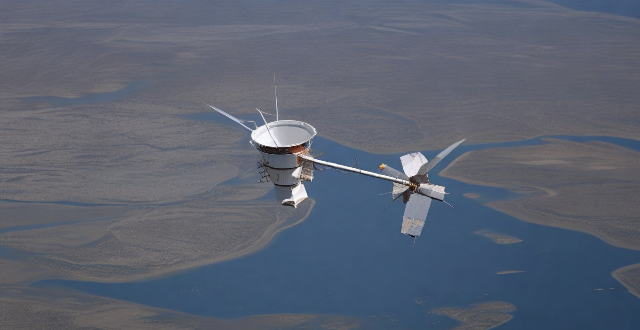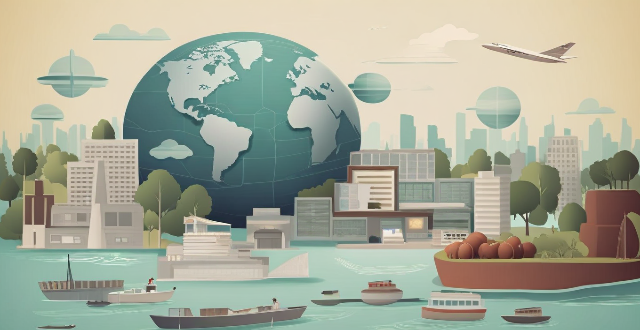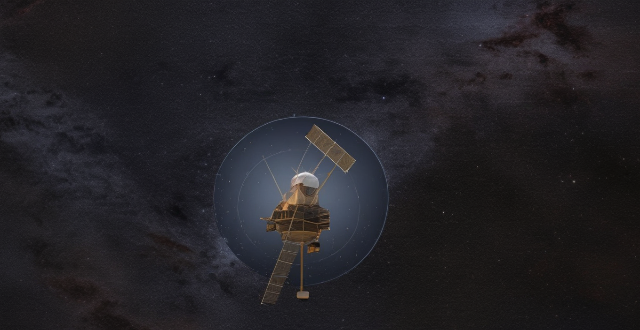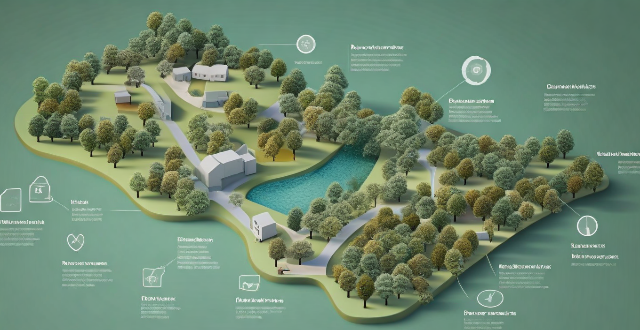Monitoring Satellite

How do communication satellites enable real-time data transmission and monitoring ?
Communication satellites play a crucial role in enabling real-time data transmission and monitoring by serving as relay stations in space that can receive signals from one location on Earth and transmit them to another location. This is achieved through a complex system of technology, infrastructure, and protocols. Satellites are positioned in orbits around the Earth, either in geostationary orbit (GEO) or lower Earth orbit (LEO). Geostationary satellites remain fixed over a specific point on the Earth's surface, while LEO satellites move relative to the Earth's surface. The process begins when a signal, such as a phone call, internet data, or video feed, is generated at a source location. The signal is then sent via a ground station, which has powerful transmitters and antennas, up to the communication satellite using radio waves. Once the satellite receives the signal, it amplifies and frequencies it to avoid interference with other signals. The amplified signal is then transmitted back down to Earth, where another ground station receives it. Finally, the received signal is distributed to its intended destination, such as a phone network, the internet, or a monitoring station. Real-time monitoring is facilitated by the speed at which data can travel via satellite. With modern technology, latency (the time delay in signal transmission) can be minimized, especially with LEO satellites due to their closer proximity to Earth. Satellites can also be networked to provide redundancy and increased bandwidth for large-scale monitoring systems. Key technologies and infrastructure include ground stations, satellite design, network protocols, and satellite constellations. However, there are challenges and considerations such as weather impact, geographical constraints, and regulatory issues. In summary, communication satellites enable real-time data transmission and monitoring by acting as high-altitude relay stations, utilizing advanced technologies and infrastructure to deliver signals across vast distances with minimal delay.

What are the benefits of using satellite technology for environmental monitoring ?
Satellite technology offers numerous benefits for environmental monitoring, such as wide coverage area, high temporal resolution, cost-effectiveness, objectivity and accuracy, multispectral imaging capabilities, real-time data accessibility, long-term data analysis, and global collaboration opportunities.

What are the costs associated with implementing satellite communication systems ?
The text discusses the costs involved in implementing satellite communication systems, including design and development, manufacturing and production, launch and deployment, operational, and decommissioning expenses. It emphasizes the need to consider these costs throughout the system's lifecycle to determine its feasibility and profitability.

What is a communication satellite and how does it work ?
Communication satellites are vital for global telecommunication, relaying signals for phone calls, internet data, and TV broadcasts between Earth-based stations. They operate by receiving, amplifying, and retransmitting signals from one location to another through a series of steps involving transmission, reception, amplification with frequency conversion, and retransmission. Most occupy geostationary orbit to maintain a fixed position relative to Earth, simplifying ground station antenna targeting. These satellites cover extensive areas, support diverse applications like broadcasting and emergency response, and often form part of larger networks ensuring global connectivity. Their role is crucial in international business, disaster relief, and personal communications worldwide.

What are the challenges faced in satellite communication ?
Satellite communication faces challenges such as atmospheric effects, physical obstructions, technical limitations, economic factors, regulatory issues, environmental impacts, security concerns, geopolitical factors, technological advancements, and natural disasters. These challenges highlight the need for innovation and improvement in maintaining reliable satellite communication networks.

What is satellite communication and how does it work ?
Satellite communication is a method of transmitting information over long distances using artificial satellites. These satellites orbit the Earth and act as relay stations, receiving signals from one location and transmitting them to another. The process involves a transmitter sending a signal to a satellite, which then retransmits it to a receiver on Earth. This technology has revolutionized global communications, allowing people to connect with others across the world in real-time.

What are the latest advancements in satellite communication technology ?
Satellite communication technology has seen significant advancements in recent years, including high-throughput satellites (HTS) offering increased bandwidth and improved coverage, low Earth orbit (LEO) satellite constellations providing global coverage with low latency, 5G integrated satellite systems enhancing connectivity and capacity, and quantum satellite networks enabling secure long-distance transmission. These developments are revolutionizing global communication by offering faster speeds, broader access, and enhanced security.

How can satellite communication be used for emergency response and disaster relief ?
Satellite communication is critical in emergency response and disaster relief, offering global coverage, high availability, scalability, and multipurpose use. It enables immediate alerts, coordination, resource deployment, and medical assistance during emergencies. In disaster relief, it aids damage assessment, information dissemination, infrastructure recovery, and aid distribution. Key technical aspects include satellite phones, VSAT terminals, and data collection through sensors. Proper logistics such as training, maintenance, and partnerships with service providers are crucial for effective utilization. Satellite communication significantly enhances the capability to respond to natural disasters and emergencies, reducing their impact on lives and properties.

How does satellite communication compare to other forms of communication ?
Satellite communication offers global coverage, high capacitySatellite communication offers global coverage, high capacity higher latency and initial costs and reliability but has higher latency and initial costs compared to terrestrial and wireless communication. Terrestrial communication provides lower latency and moderate reliability at a lower cost, while wireless communication offers convenience and portability at a variable cost. Satellite communication is suitable for remote areas and sensitive applications due to its security features.

What are the latest advancements in communication satellite technology ?
The latest advancements in communication satellite technology include high-throughput satellites (HTS), low Earth orbit (LEO) satellites, and software-defined networking (SDN) and network function virtualization (NFV). HTS offers increased capacity, faster internet speeds, and improved coverage. LEO satellites provide reduced latency, improved signal strength, and global coverage. SDN and NFV enable centralized management, flexibility, scalability, and improved security. These technologies are transforming the way we communicate across the globe.

How can satellite communication be used in remote areas ?
Satellite communication is essential for connecting remote areas with services and information. Benefits include wide coverage, high availability, and flexibility. Applications in education, healthcare, disaster response, agriculture, connectivity, and environmental monitoring improve quality of life and access to resources.

What are the benefits of using satellite communication ?
Satellite communication offers numerous benefits including global coverage, reliability, high-speed data transfer, flexibility, cost-effectiveness, and scalability. It is particularly useful for industries requiring global connectivity, emergency services, and businesses in remote locations. Despite higher initial setup costs, the long-term benefits often outweigh the expenses.

What are the key methods used in environmental monitoring ?
Environmental monitoring is a crucial process that involves the observation, identification, and measurement of various environmental parameters to assess the quality and health of the environment. The key methods used in environmental monitoring include sampling, sensor technology, satellite imagery, and geographic information systems (GIS). Sampling involves collecting samples from different sources such as air, water, soil, and biota and analyzing them in a laboratory to determine the presence and concentration of pollutants. Sensor technology detects and measures pollutants in real-time using sensors that can detect specific pollutants and provide continuous data on their concentrations. Satellite imagery observes changes in land use, vegetation cover, and climate patterns over large areas by analyzing images captured by satellites orbiting the Earth. GIS analyzes spatial data and creates maps showing the distribution of pollutants and their impacts on the environment. These methods are essential for assessing environmental quality and making informed decisions about resource management and risk assessment.

What are the different types of communication satellites and their uses ?
Communication satellites are categorized into different types based on their orbital positioning and services they offer. These include Geostationary Earth Orbit (GEO), Medium Earth Orbit (MEO), Low Earth Orbit (LEO), Highly Elliptical Orbit (HEO), Geosynchronous Transfer Orbit (GTO), and Polar Orbit (PO) satellites. Each type serves specific purposes such as telecommunications, weather monitoring, navigation, internet access, Earth observation, space exploration, aeronautical navigation, and more. Examples include INSAT, Intelsat, O3b Networks, Iridium NEXT, Starlink, OneWeb, Molniya, NOAA's GOES series, NASA's Terra and Aqua satellites.

What role does satellite communication play in space exploration and research ?
Satellite communication is crucial for space exploration and research, enabling data collection, real-time communication, navigation, and international collaboration. It will continue to play a vital role in future applications such as deep space exploration, autonomous robotics, and quantum communication.

How can technology be used to monitor and predict climate conflicts ?
Climate conflicts, exacerbated by competition for natural resources, have significant impacts. Technology is crucial in monitoring and predicting these conflicts through satellite imagery, data analytics, GIS, social media monitoring, mobile technology, and collaboration platforms. These tools help in early warning, predictive modeling, mapping disputes, sentiment analysis, citizen reporting, information dissemination, and multi-sector coordination.

How does climate change affect the priorities in environmental monitoring ?
Climate change significantly impacts the priorities in environmental monitoring by necessitating a focus on rising sea levels, extreme weather events, changes in biodiversity, impacts on agriculture and food security, and air quality issues. Addressing these challenges requires a comprehensive approach that incorporates regular monitoring, early warning systems, adaptation strategies, and effective conservation planning.

What are the challenges faced by communication satellites in terms of maintenance and repair ?
Communication satellites play a crucial role in modern telecommunications, providing global connectivity and supporting various applications such as television broadcasting, telephone services, and internet access. However, maintaining and repairing these space-based assets present significant challenges due to their unique operating environment and technical complexities. The main challenges faced by communication satellites in terms of maintenance and repair include: 1. Orbital Dynamics 2. Technical Complexity 3. Environmental Factors 4. Resource Constraints 5. Regulatory and Legal Issues 6. Intervention Difficulties 7. Decommissioning Challenges

What are the main challenges faced in implementing effective environmental monitoring programs ?
Main challenges faced in implementing effective environmental monitoring programs include limited funding, technological barriers, data management issues, legal and regulatory compliance hurdles, lack of public awareness and engagement, the unpredictability of natural variability, and difficulties in accessing remote or politically sensitive monitoring sites. Addressing these challenges through strategic planning, collaboration, and investment in technology and training can enhance the effectiveness of such programs.

What role does technology play in improving environmental monitoring ?
Technology plays a pivotal role in enhancing environmental monitoring by enabling advanced data collection, analysis, visualization, reporting, and conservation efforts. Satellite imagery, drone surveillance, sensor networks, big data analytics, GIS, real-time reporting systems, and early warning technologies are among the key tools used. These advancements not only improve our understanding of environmental changes but also aid in managing resources and raising public awareness about ecological issues.

How often should air quality monitoring be conducted ?
Air quality monitoring is crucial for ensuring safe and healthy air, with the frequency of such monitoring influenced by various factors. Urban areas typically require daily monitoring due to high pollution levels, while rural areas may only need weekly or monthly checks. Special situations, like emergencies or natural disasters, might necessitate continuous monitoring. The goal is to balance between tracking long-term trends and identifying short-term spikes in pollution, all while considering available resources.

Can sport monitoring technology help prevent injuries ?
Sport monitoring technology has become increasingly popular in recent years, with many athletes and coaches using it to improve performance and prevent injuries. This technology includes wearable devices such as fitness trackers, heart rate monitors, and GPS tracking systems, as well as more advanced technologies like motion capture systems and force plates. Sport monitoring technology works by collecting data on an athlete's movements, heart rate, and other physiological factors. This data is then analyzed to provide insights into the athlete's performance and identify areas where they may be at risk of injury. By tracking an athlete's movements and physiological factors, sport monitoring technology can identify potential injury risk factors early on, help coaches create personalized training plans for each athlete based on their individual needs and abilities, monitor recovery periods between sessions, and educate athletes and coaches about injury prevention strategies. Overall, there is evidence to suggest that sport monitoring technology can help prevent injuries in several ways. However, it is important to note that no technology can completely eliminate the risk of injury, and proper training, conditioning, and safety measures should always be prioritized.

How can satellite communication improve global connectivity ?
Satellite communication has revolutionized global connectivity by providing increased coverage, high-speed internet access, cost-effective solutions, enhanced disaster recovery efforts, and improved education and healthcare services. It also facilitates international trade and business operations by enabling instantaneous communication across borders.

Can heart rate monitoring help prevent overexertion during exercise ?
Overexertion during exercise can lead to fatigue, muscle soreness, and injuries. Heart rate monitoring is a technique used to measure the number of times a person's heart beats per minute (bpm). By monitoring your heart rate, you can determine personalized training zones based on age, fitness level, and goals, providing real-time feedback on current heart rate during exercise. Recovery time is essential for preventing overexertion, and heart rate monitoring helps determine how long it takes for the body to return to its resting state. Best practices for heart rate monitoring include choosing the right device, calibrating regularly, warming up properly, staying hydrated, and listening to your body. Following these guidelines and listening to your body can help prevent overexertion during exercise while maximizing its benefits.

Can solar flares cause communication interference ?
Solar flares, intense bursts of radiation from the sun's atmosphere, can disrupt communication systems on Earth. This includes shortwave radio signals, satellite communications, and other terrestrial networks. The effects range from signal quality disruption and frequency deviation to satellite link disruptions, GPS accuracy issues, and even physical damage to satellite hardware. While these impacts vary, organizations involved in critical communication operations must be aware of the risks and implement mitigation strategies to minimize potential disruptions.

What is air quality monitoring and why is it important ?
Air quality monitoring is crucial for public health, environmental protection, and socio-economic decision making. It involves measuring pollutants like particulate matter, nitrogen dioxide, sulfur dioxide, carbon monoxide, and ozone to assess their impact on human health, the environment, and society. Poor air quality can cause respiratory diseases, cardiovascular problems, nervous system disorders, developmental issues in children, and increase cancer risks. It also contributes to acid rain, ozone depletion, habitat destruction, and global warming. Socio-economically, poor air quality leads to increased healthcare costs, lost work days, reduced tourism, and lower property values. Air quality monitoring data helps individuals make informed decisions, governments create regulations, and influence public policy.